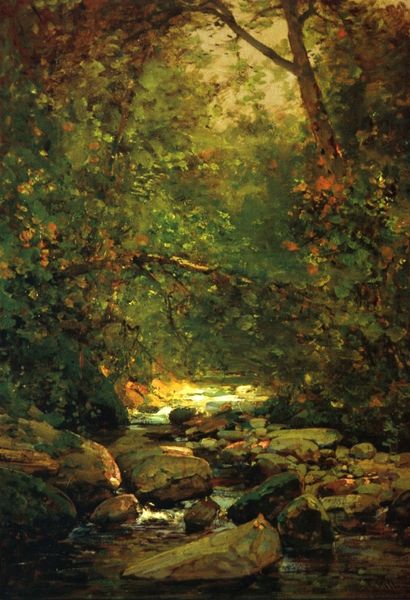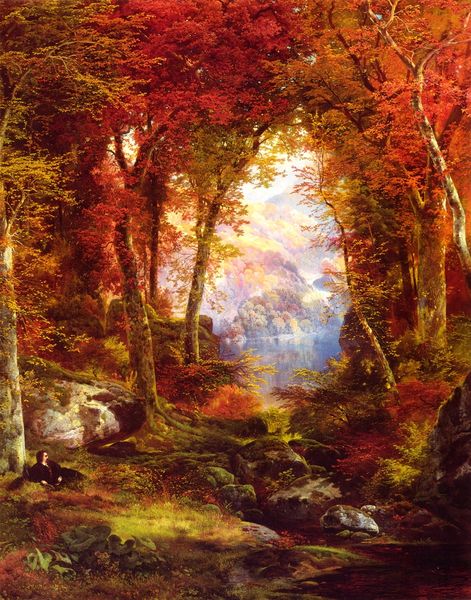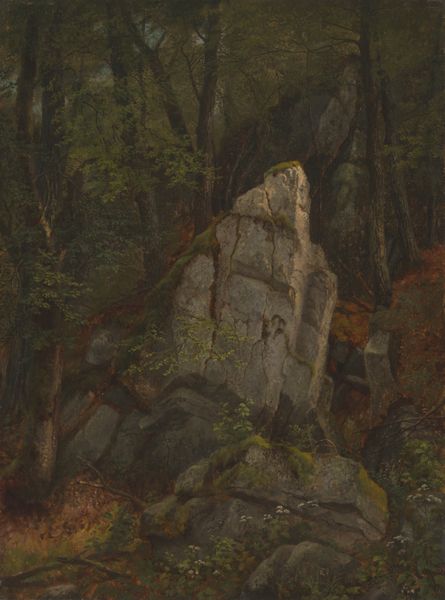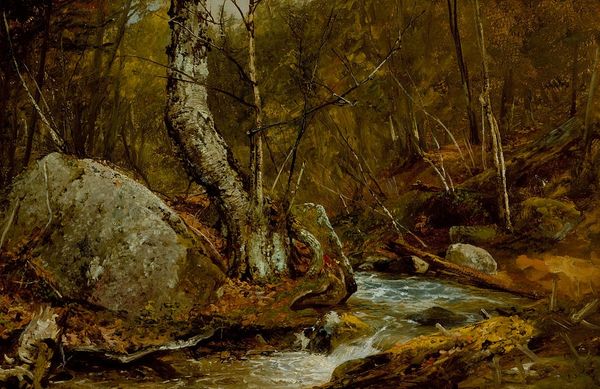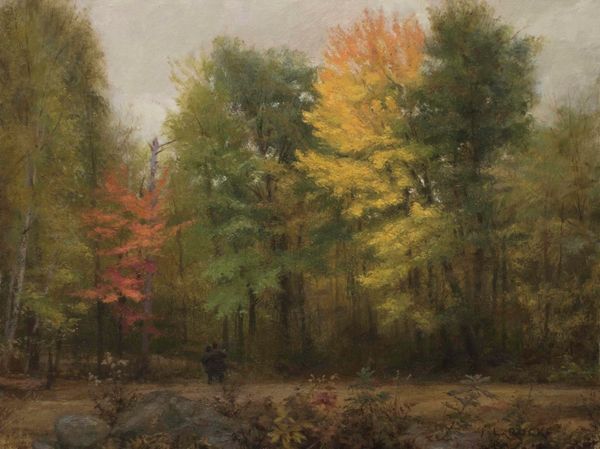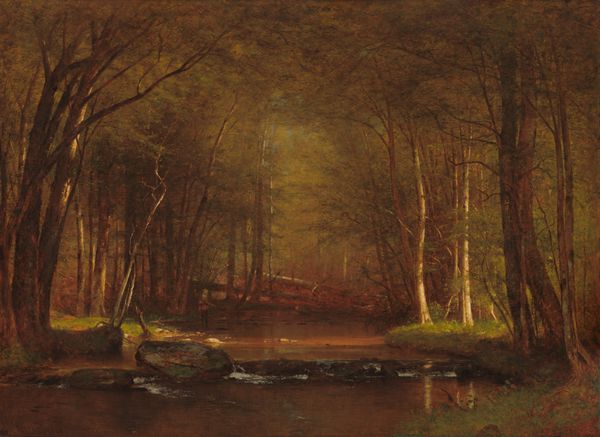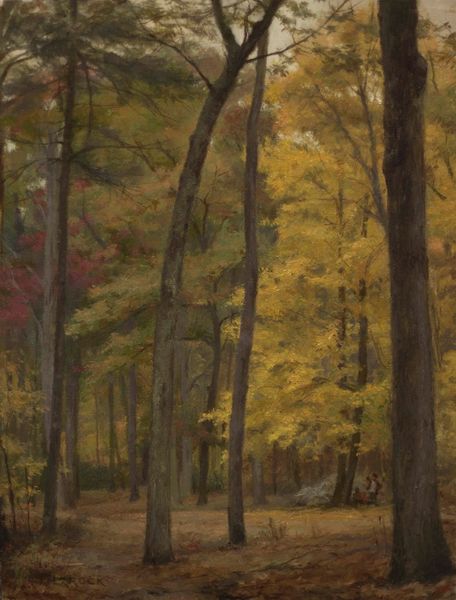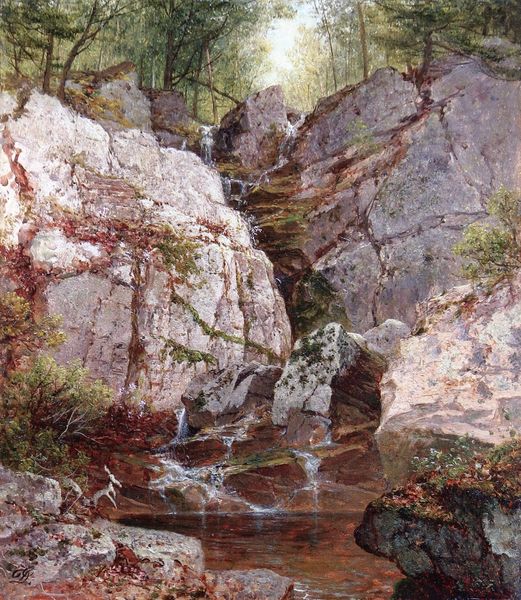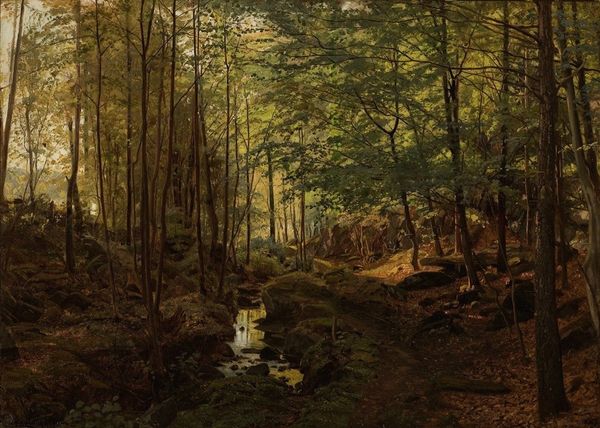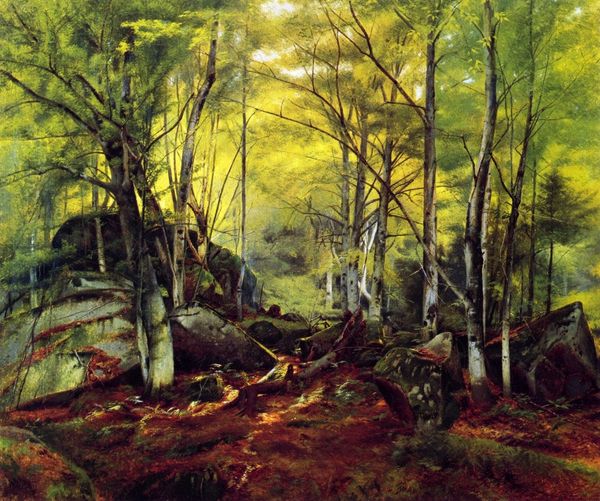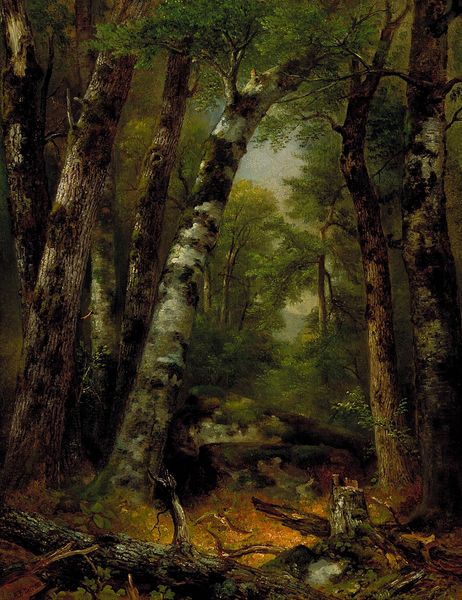
Dimensions: overall: 71.4 x 61 cm (28 1/8 x 24 in.) framed: 96.5 x 85.4 x 13 cm (38 x 33 5/8 x 5 1/8 in.)
Copyright: National Gallery of Art: CC0 1.0
Curator: Here we have William Trost Richards’s “October,” an oil on canvas completed in 1863. Richards was deeply influenced by the Hudson River School, which championed detailed realism in landscapes. Editor: It’s so inviting. My immediate reaction is the sheer coziness of the forest scene, the deep reds and yellows of the leaves suggesting warmth and the comfort of seasonal change. Curator: The Hudson River School's aesthetic often romanticized the American landscape, especially at this time when anxieties around national identity and the Civil War were escalating. This pursuit of idyllic natural spaces arguably functioned as an escape, perhaps even as a form of silent protest or longing for a united nation. Editor: Absolutely, the forest itself is a symbol ripe with meaning – the journey into the unknown, the cyclical nature of life, death, and rebirth echoed in the autumnal colours. There's something very universal about that visual language. Curator: Richards, through his incredibly detailed portrayal of foliage and rocks, captures more than just visual accuracy. Consider that in the context of 1863, landscape art takes on this new potential meaning – not just celebrating untouched wilderness but maybe as a subtle nod to the country’s internal conflict. Think of what these familiar places may have meant to someone facing displacement or military service. Editor: Yes, the meticulous realism feels purposeful, creating a sense of stability amid turbulence. One also wonders about the absence of figures – are we invited to imagine ourselves wandering into that golden path or meant to understand ourselves as distant observers? Curator: It definitely prompts contemplation. The level of realism could even be viewed as a documentary approach, archiving the natural landscape at a moment of social upheaval, underscoring nature's enduring power despite human conflicts. Editor: I think both that symbolic sense of promise and the realism reflecting detail and providing clarity really give me new perspective on the artwork as a visual document, or memory, rather than purely as an emotional escape. Curator: Agreed, I think examining artwork in the context of that era of deep social and political tensions helps deepen one's engagement with the visual elements and opens space for crucial, insightful considerations.
Comments
No comments
Be the first to comment and join the conversation on the ultimate creative platform.
